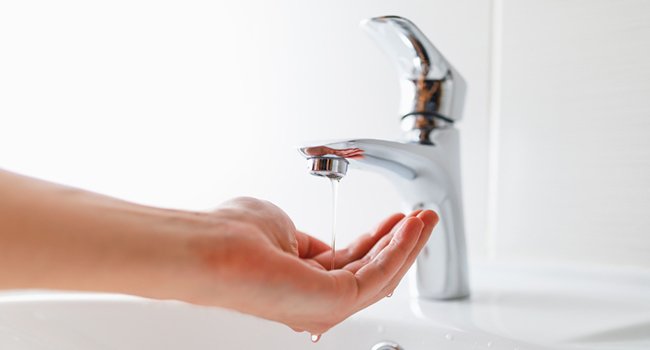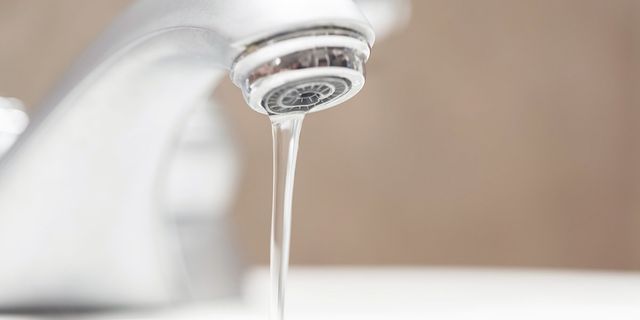Quick Processes to Boost Low Water Pressure in Your Home
Quick Processes to Boost Low Water Pressure in Your Home
Blog Article
Presented here down the page you might get a lot of outstanding details in regards to 4 Ways to Troubleshoot Low Water Pressure.

Low tide stress in your house can be a frustrating trouble, affecting everything from bathing to washing dishes. If you're experiencing weak water flow, there are several feasible causes and options to check out. In this guide, we'll talk about common factors for low water pressure and useful steps to deal with the issue effectively.
Introduction to Low Water Pressure
Low tide stress takes place when the circulation of water from your faucets, showers, and other fixtures is weaker than normal. This can make daily tasks extra challenging and less efficient. Understanding the causes of low tide stress is vital to locating the ideal remedy.
Usual Causes of Low Tide Stress
Pipe Obstructions
Gradually, pipelines can come to be obstructed with mineral deposits, sediment, or debris, restricting the circulation of water. This is a common issue in older homes with galvanized steel pipes.
Rust
Corrosion within pipes can bring about leakages and decreased water pressure. Rust build-up can tighten water circulation, particularly in aging plumbing systems.
Faulty Pressure Regulatory Authorities
Pressure regulatory authorities are accountable for keeping consistent water pressure in your house. If they malfunction, it can result in low water stress or irregular flow throughout the house.
Local Supply Of Water Issues
Often, the trouble exists outside your home. Municipal supply of water problems, such as main line leaks or maintenance work, can briefly decrease water pressure in your area.
How to Diagnose Low Water Pressure
Examining Taps and Fixtures
Start by examining the water pressure at various faucets and components throughout your home. If the issue is separated to specific locations, it might show local issues.
Checking Pipelines
Check visible pipes for signs of leakages, corrosion, or blockages. Pay attention to any kind of unusual sounds, such as banging or rattling pipelines, which can indicate problems within the plumbing system.
Consulting with a Plumber
If you're unable to determine the root cause of low tide stress, consider employing a specialist plumber to perform a comprehensive evaluation. They can determine underlying problems and advise proper remedies.
DIY Solutions to Deal With Low Water Stress
Cleaning Aerators and Showerheads
Natural resources can accumulate in aerators and showerheads, lowering water flow. Remove and clean these components on a regular basis to improve water pressure.
Flushing Water Heater
Debris buildup in the water heater can limit circulation and reduce performance. Flushing the tank periodically aids get rid of sediment and keep ideal efficiency.
Inspecting Pressure Regulatory Authority
Make sure that the pressure regulator is working properly. Adjusting or replacing the regulatory authority can help bring back proper water stress throughout your home.
Clearing Clogs in Water Lines
For small blockages, attempt making use of a plumbing snake or chemical drainpipe cleaner to clear blockages in pipes. Beware when making use of chemicals and comply with security standards.
When to Call a Professional Plumber
If do it yourself efforts fall short to settle the problem or if you suspect substantial plumbing issues, it's best to look for assistance from a qualified plumber. They have the expertise and tools to attend to intricate problems securely and successfully.
Safety Nets to Maintain Water Pressure
Normal Upkeep
Arrange regular maintenance for your plumbing system to avoid concerns such as rust, leakages, and blockages. Dealing with minor issues early can help prevent even more substantial repairs in the future.
Installing a Stress Booster
Consider mounting a stress booster pump to enhance water stress in areas with constantly low circulation. This can be particularly valuable for multi-story homes or residential or commercial properties with high-demand fixtures.
Monitoring Water Usage
Be mindful of water use routines and prevent overtaxing the plumbing system. Easy adjustments, such as shocking showers and washing loads, can help keep adequate water pressure.
Final thought
Handling low water stress can be frustrating, but recognizing the underlying reasons and executing suitable services can bring back optimal flow throughout your home. Whether it's cleaning up aerators, inspecting pipes, or seeking advice from a plumber, taking proactive steps can ensure a constant supply of water for your everyday demands.
FOUR WAYS TO FIX LOW WATER PRESSURE NOW
Turning on a shower or faucet only to find the water comes out in a sad, slow drizzle is never a good feeling. How exactly are you supposed to wash a pan or take a quick shower when it takes 10 minutes just to rinse off a little soap? The good news is that when your water pressure is bad, there's always a cause: typically one that can be easily fixed. Here are some of the most common causes of low pressure and what you can do to fix the issue:
DEBRIS AND MINERAL DEPOSIT BUILDUPS
If you notice low water pressure from just one or two of the fixtures in your house, the problem likely has to do with debris buildup. Water is full of minerals and other debris, all of which can accumulate in your pipes and on your fixtures. This can cause a blockage that affects how much water flows through. To fix this, try filling a small plastic bag with white vinegar, and use a rubber band to hang it around your showerhead or faucet. Let the head of the fixture soak for a few hours, and the vinegar should loosen the deposits.
WATER LEAKS
Leaks are another common cause of low water pressure. If water is flowing out of your plumbing through a hole or crack before it can reach your fixture, the pressure coming out of the faucet or showerhead will be lower. A plumbing professional is your best bet for finding and repairing a leak in your water supply pipes.
Leaks are another common cause of low water pressure. If water is flowing out of your plumbing through a hole or crack before it can reach your fixture, the pressure coming out of the faucet or showerhead will be lower. A plumbing professional is your best bet for finding and repairing a leak in your water supply pipes.
FOUR WAYS TO FIX LOW WATER PRESSURE NOW
Turning on a shower or faucet only to find the water comes out in a sad, slow drizzle is never a good feeling. How exactly are you supposed to wash a pan or take a quick shower when it takes 10 minutes just to rinse off a little soap? The good news is that when your water pressure is bad, there's always a cause: typically one that can be easily fixed. Here are some of the most common causes of low pressure and what you can do to fix the issue:
DEBRIS AND MINERAL DEPOSIT BUILDUPS
If you notice low water pressure from just one or two of the fixtures in your house, the problem likely has to do with debris buildup. Water is full of minerals and other debris, all of which can accumulate in your pipes and on your fixtures. This can cause a blockage that affects how much water flows through. To fix this, try filling a small plastic bag with white vinegar, and use a rubber band to hang it around your showerhead or faucet. Let the head of the fixture soak for a few hours, and the vinegar should loosen the deposits.
WATER LEAKS
Leaks are another common cause of low water pressure. If water is flowing out of your plumbing through a hole or crack before it can reach your fixture, the pressure coming out of the faucet or showerhead will be lower. A plumbing professional is your best bet for finding and repairing a leak in your water supply pipes.
Leaks are another common cause of low water pressure. If water is flowing out of your plumbing through a hole or crack before it can reach your fixture, the pressure coming out of the faucet or showerhead will be lower. A plumbing professional is your best bet for finding and repairing a leak in your water supply pipes.
A VALVE ISSUE
If you have low water pressure throughout your home, check your main shut-off valve to make sure it's completely open. You may also want to see if there's a pressure-reducing valve installed. If there is, have a plumber help you adjust the settings to get the pressure you're looking for.
OTHERS USING WATER
Believe it or not, your low water pressure could be caused by your neighbors. If you notice low pressure at certain times of day, it may be because you and the people living next to you have similar schedules - when everyone is showering at the same time, the pressure will be lower in every home. Low pressure throughout the neighborhood may also be caused by an issue with your municipal water supply. If that's the case, call the supplier to see if they're working on the issue.
https://www.rotorooter.com/blog/water-leaking/low-water-pressure-fixes/

We had been made aware of that editorial on Low Water Pressure in the House? through a good friend on our other web property. Sharing is caring. One never knows, you may be helping someone out. We value reading our article about 9 Reasons for Low Water Pressure in Your House.
Call Today Report this page